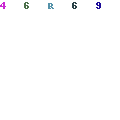Professor uses Spanish national identity to publish … and teach
What does art and literature have to do with collective and national identity and Juan Goytisolo? This is the exact question that Olga Bezhanova, assistant professor of foreign languages and literature at SIUE, answered in a recent article accepted for publication.
Bezhanova, a native of Ukraine, is interested in studying the formation of collective identity. In particular, she looks at national identity, with a specialty in modern and contemporary Spanish literature, history and culture.
“When I speak of collective identity, I mean national identity, linguistic, sexual, gender identities, because I believe that every kind of collective identity—in spite of the specifics of the historical situation—have certain mechanisms which go into its formation and those mechanisms are shared between different kinds of identity,” Bezhanova said.
There are natural bridges in different cultures and identity types.
“If you figure out how the mechanisms of identity work, then you can apply it to just about anywhere else.” Bezhanova said that studying national identity in Spain does not limit the overall study of collective identity.
Bezhanova says the topic of her paper and the topics she uses in her classes are related.
“How the artists themselves can participate in shaping the collective identities or in creating alternative collective identities to oppose, for example, governmental discourses,” she stated.
Bezhanova chose to look at Juan Goytisolo, an artist and writer from Spain who tried to address the national identity crisis. Bezhanova stated most of his prominent writing came between 1975 and 1985.
“Goytisolo addressed the official national identity of Spain. He tried to demonstrate that the official identity was formed on a lot of falsification, exclusions, and he tried to construct his own alternative version of Spanish national identities that would recognize, for example, the importance of Muslims and Jews for Spain and Spanish history” Bezhanova stated.
The conclusion of Bezhanova’s paper shows an interesting paradox.
“When he tried to create an alternative identity, he fell into the same identity trap that the creators of the official identities fell into. Because, in the end, the identity he constructed is just as rigid and just as unforgiving—just as exclusionary and relentless—as the official identity,” she pointed out.
The article will be published in the Lamar Journal of Humanities, which, according to Bezhanova, accepts articles with significant contributions to theoretical, philosophical and ideological aspects of literature.
“It [the article] looks at the importance of art for the creation of national identities, the importance of canonical artists and how ideological the decision is to include an artist into the canon—of the valued and respected national artists—which excludes other artists,” Bezhanova stated as the reason the article was accepted.
Bezhanova, who believes in order to understand how identity of any sort operates, uses her personal interests to create a safe, critical distance for students in her courses.
“In order to understand how identity works you have to have a critical distance,” she said. “I think this is why it is so important to take courses in other languages and cultures because it is something that opens you up to things you would not otherwise see, because you are too close to it.”
Filed Under: Foreign Languages & Lit • Scholarly Activities













